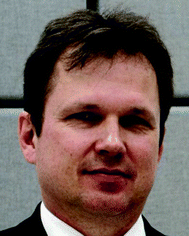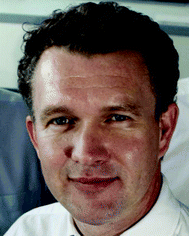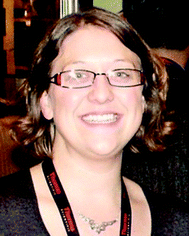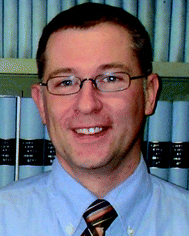Happy New Year from JAAS!
Welcome to Issue 1 of JAAS in 2013, we wish you a very Happy New Year from RSC Publishing and the JAAS team!Firstly we would like to officially welcome Frank Vanhaecke from Ghent University, as the new Chair of the JAAS Editorial Board. Frank first joined JAAS as a member of the Advisory Board in 2006, later joining the Editorial Board. According to his Editorial which he wrote for the 25th anniversary of the journal,1 he has also been reading JAAS since 1988, when he started his postgraduate studies, so he has a lot of experience to draw upon. In this same Editorial, he also referred to a comment from the first Chair of the JAAS Editorial Board, John S. Ottoway, who wished to see JAAS “make a significant and lasting contribution to our science”—a sentiment we are confident that Frank will continue to uphold.
In the past few years, we have seen the reach of elemental and atomic research take some major steps, with analytical techniques being used in a wide range of exciting research areas.
In the area of art conservation, with a combination of X-ray analysis techniques, Koen Janssens and colleagues have demonstrated the power of elemental techniques, studying the degradation of valuable Van Gogh masterpieces.2
In the field of geology, Li isotopic analysis of planktonic foraminifera using ICP-MS revealed an abrupt drop in δ7Li across the Cretaceous–Paleogene boundary, interpreted by Misra and Froelich to be evidence for large-scale continental denudation and acid rain weathering following the asteroid impact that led to the Cretaceous–Paleogene extinction event.3
In the biomedical area, a brilliant proof of principle has been published by Nolan et al. demonstrating the new technology of mass cytometry, which can provide a uniquely detailed view of cell differentiation in the human hematopoietic system.4 This tackles a problem central to biomedical science: identifying the lineages and phenotypes of specialised cells and tracking their molecular differentiation.
Elemental techniques have also been successfully combined with physiological experiments to add to the on-going discussion on the role of arsenic in the bacterial isolate GFAJ-1—a claim which would have significant implications for our understanding of life.5 Detlef Günther and fellow researchers used ICP-OES and ICP-MS to provide evidence that whilst GFAJ-1 is highly resistant to arsenate, it still requires phosphate for growth.
These examples of high-profile or landmark papers show just how valuable atomic and elemental analytical techniques can be. Successful collaborations between analytical scientists and those from various disciplines can also often lead in turn to the birth of new technological developments to suit these purposes.
JAAS continues to be the leading journal dedicated to the publication of research in element and isotope ratio determination in all areas of application, and so we warmly welcome and encourage scientific discussion about the use of these techniques, stemming from all and any areas of science.
Our aim is to support the widespread use and development of these elemental and atomic techniques for applications in a diverse range of research fields. JAAS will continue to be the home for the fundamental analytical instrument and method development, which can then act as the springboard for high-profile applications that capture the attention of the wider scientific community.
Welcome to new Editorial and Advisory Board members
We would like to warmly welcome new members Dmitry Bandura and ASU representative, Hywel Evans, to the Editorial Board and we look forward to working with them in the future.Dmitry Bandura
Hywel Evans
Dmitry has devoted most of his career to developing MS-based technologies for in situ elemental analysis of micrometeoroids, ICP-TOF-MS, ICP-DRC-MS, and mass cytometry for multi-parametric detection of biomarkers in individual cells via elementally tagged antibodies. He co-founded DVS Sciences Inc. in 2004 to bring the instrumentation, reagents and methods of mass cytometry to the market.
Hywel is Associate Professor in the School of Geography, Earth and Environmental Sciences at the University of Plymouth. His research interests include the development of instrumentation and methods for atomic and molecular analysis. One major theme is the application of liquid chromatography coupled with mass spectrometry for elemental speciation and isotopic analysis. A second theme is the development of low cost instrumentation for environmental monitoring.
We would like to take this opportunity to also welcome new Advisory Board members to the journal, Bernd Bodenmiller from the University of Zurich, Carsten Engelhard from the University of Münster, Heidi Goenaga-Infante from LGC, Mark Rehkämper from Imperial College London and Patricia Smichowski from the Atomic Energy Commission of Argentina.
The Editorial team in Cambridge has also seen some changes, with Rebecca Brodie taking over as Deputy Editor for JAAS, and Paola Quattroni joining the team as Development Editor.
We would also like to thank all our Editorial and Advisory Board members for their much appreciated input and support this past year, and we look forward to working with them again in 2013.
Members of the Editorial team will be out and about at a range of conferences throughout 2013, including the European Winter Conference on Plasma Spectrochemistry, Pittcon, Experimental Biology, Analytical Research Forum, SCIX 2013, JASIS 2013 and the Beijing Conference and Exhibition on Instrumental Analysis (BCEIA). Please do get in touch if you are also attending, as we would be very happy to meet up and discuss the journal, future developments and any aspect of publishing in JAAS.
Would you like to be involved?
For our authors and readers, we will continue to highlight the Hot Articles published in the journal on our blog, JAAS News. This is also a great place for finding information about upcoming conferences, conference reports, themed issues and general news from the community. Developing our online community is extremely important to us, and so please do not hesitate to contact Martín Resano, Editor of JAAS News, if you would like to be involved.Themed issues have always been a key part of JAAS and coming up in 2013, look out for our web collection of articles from Central and Eastern European authors, which has been Guest Edited by Advisory Board member Pawel Pohl and Jiří Dědina,6 and our themed issue from the 2012 Asia-Pacific Winter Conference on Plasma Spectrochemistry, which was held in Jeju, Korea. We will also be featuring additional themed issues on exciting and emerging topics in the field throughout the year. However, we would also like to hear what our readers would like to read, so if you have an idea for a themed issue or web collection, then please do contact the Editorial office (E-mail: jaas-rsc@rsc.org) with your idea, as we would love to hear from you.
Finally, we would like to take this opportunity to acknowledge the continued support from all our authors and referees, and to again wish you a very happy and prosperous New Year!
May Copsey, Editor, JAAS
Frank Vanhaecke, Chair, JAAS Editorial Board
References
- F. Vanhaecke, J. Anal. At. Spectrom., 2010, 25, 101–102 RSC.
- G. Van der Snickt, K. Janssens, J. Dik, W. De Nolf, F. Vanmeert, J. Jaroszewicz, M. Cotte, G. Falkenberg and L. Van der Loeff, Anal. Chem., 2012 DOI:10.1021/ac3015627.
- S. Misra and P. Froelich, Science, 2012, 335(6070), 818–823, DOI:10.1126/science.1214697.
- S. C. Bendall, E. F. Simonds, P. Qiu, E. D. Amir, P. O. Krutzik, R. Finck, R. V. Bruggner, R. Melamed, A. Trejo, O. I. Ornatsky, R. S. Balderas, S. K. Plevritis, K. Sachs, D. Pe'er, S. D. Tanner and G. P. Nolan, Science, 2011, 687–696, DOI:10.1126/science.1198704.
- T. J. Erb, P. Kiefer, B. Hattendorf, D. Günther and J. A. Vorholt, Science, 2011, 337(6093), 467–470, DOI:10.1126/science.1218455.
- P. Pohl and J. Dědina, J. Anal. At. Spectrom., 2013 10.1039/c2ja90059a.
| This journal is © The Royal Society of Chemistry 2013 |




